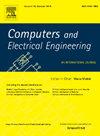利用模糊PID DSTACOM和混合MPPT优化风能集成以降低谐波失真
IF 4
3区 计算机科学
Q1 COMPUTER SCIENCE, HARDWARE & ARCHITECTURE
引用次数: 0
摘要
风能转换系统(WECS)在可再生能源发电中发挥着至关重要的作用,但面临着风速波动和电网不稳定等挑战,从而导致电能质量问题和电压波动。本研究提出了一种风力并网与电池储能系统(BESS)的高级集成,通过模糊pid控制的DSTATCOM和混合最大功率点跟踪(MPPT)算法进行优化,该算法结合了扰动和观察(P&;O)与增量电导(InCon)。模糊pid控制的DSTATCOM提供动态无功补偿,稳定电压,减轻谐波失真,而BESS确保在不同风力条件下有效的储能和调度。仿真结果表明,总谐波失真(THD)显著降低,稳定前DFIG电流THD峰值为10%,而电网和负载电流分别降至0.15%和0.02%以下。研究结果证实,该系统提高了电力提取,最大限度地减少了谐波失真,提高了电网的稳定性。这些结果表明,所开发的方法为将风能整合到现代智能电网中提供了一个强大而有效的解决方案。本文章由计算机程序翻译,如有差异,请以英文原文为准。
Optimizing wind energy integration with fuzzy PID DSTACOM and hybrid MPPT for reduced harmonic distortion
Wind Energy Conversion Systems (WECS) play a crucial role in renewable energy generation but face challenges such as fluctuating wind speeds and grid instability, leading to power quality issues and voltage fluctuations. This study proposes an advanced integration of a wind-connected grid with a Battery Energy Storage System (BESS), optimized through a fuzzy PID-controlled DSTATCOM and a hybrid Maximum Power Point Tracking (MPPT) algorithm combining Perturb and Observe (P&O) with Incremental Conductance (InCon). The fuzzy PID-controlled DSTATCOM provides dynamic reactive power compensation, stabilizes voltage, and mitigates harmonic distortions, while the BESS ensures efficient energy storage and dispatch under varying wind conditions. Simulation results demonstrate a significant reduction in Total Harmonic Distortion (THD), with the DFIG current THD peaking at 10 % before stabilization, while grid and load currents were reduced to below 0.15 % and 0.02 %, respectively. The findings confirm that the proposed system enhances power extraction, minimizes harmonic distortions, and improves grid stability. These results suggest that the developed methodology provides a robust and efficient solution for integrating wind energy into modern smart grids.
求助全文
通过发布文献求助,成功后即可免费获取论文全文。
去求助
来源期刊

Computers & Electrical Engineering
工程技术-工程:电子与电气
CiteScore
9.20
自引率
7.00%
发文量
661
审稿时长
47 days
期刊介绍:
The impact of computers has nowhere been more revolutionary than in electrical engineering. The design, analysis, and operation of electrical and electronic systems are now dominated by computers, a transformation that has been motivated by the natural ease of interface between computers and electrical systems, and the promise of spectacular improvements in speed and efficiency.
Published since 1973, Computers & Electrical Engineering provides rapid publication of topical research into the integration of computer technology and computational techniques with electrical and electronic systems. The journal publishes papers featuring novel implementations of computers and computational techniques in areas like signal and image processing, high-performance computing, parallel processing, and communications. Special attention will be paid to papers describing innovative architectures, algorithms, and software tools.
 求助内容:
求助内容: 应助结果提醒方式:
应助结果提醒方式:


